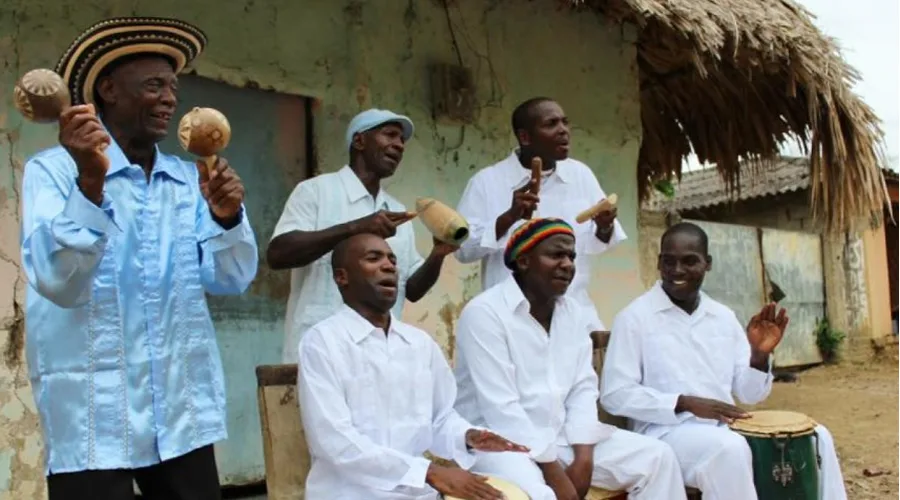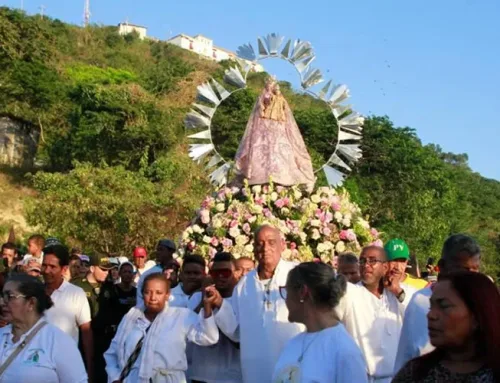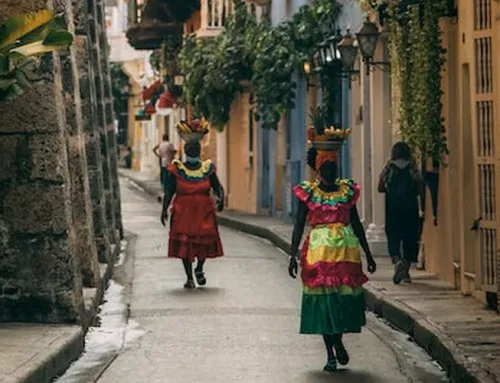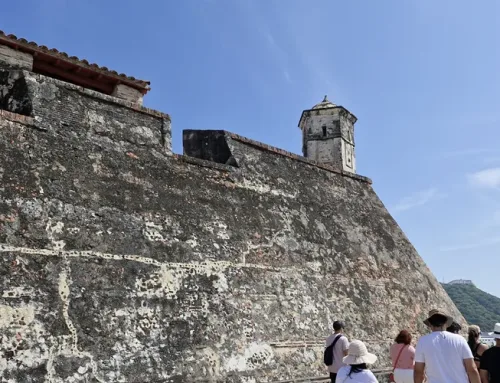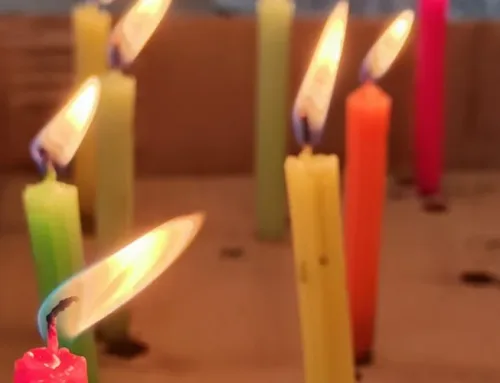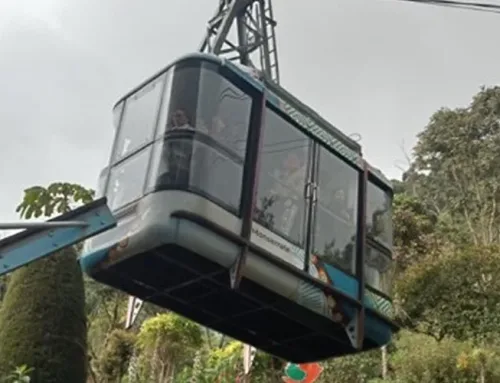San Basilio de Palenque is a small corregimiento in the department of Bolívar, Colombia, one hour from Cartagena de Indias. It is known because it was the first town in America to declare itself free from the European colony, being founded in 1619 by runaway African slaves. Due to the history that covers it, Palenque has always been a destination visited by tourists and historians from all over the world.
palenquero
As we said, San Basilio de Palenque was founded by Benkos Biohó, an African slave who managed to escape from a Spanish plantation in the XNUMXth century. Benkos Biohó formed a community of runaway slaves in the remote and difficult-to-reach region of Palenque. They established an autonomous settlement, maintaining their African cultural heritage and resisting slavery.
Due to its isolated location and the resistance of its inhabitants, San Basilio de Palenque preserved many aspects of African culture, including its Creole language, known as palenquero. Palenquero is a Creole language derived from Spanish, Portuguese and African languages, and has been recognized as the official language of Colombia.
Likewise, Palenque has been recognized by UNESCO as a Masterpiece of the Oral and Intangible Heritage of Humanity. The city attracts visitors interested in learning about its unique history, cultural traditions, music, dance, and vibrant Afro-Colombian heritage.
Today, San Basilio de Palenque continues to face challenges such as poverty and limited access to basic services. Efforts are being made to preserve and promote its cultural heritage, and tourism plays an important role in supporting the local economy. The town is a symbol of resistance and cultural pride for Afro-Colombians and a testament to the strength and resilience of the human spirit.
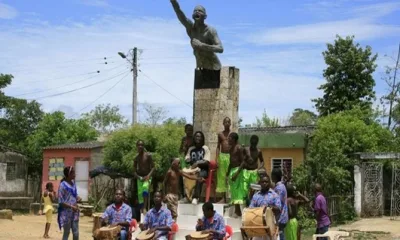
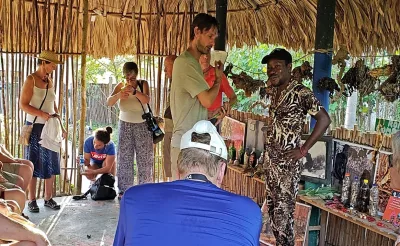
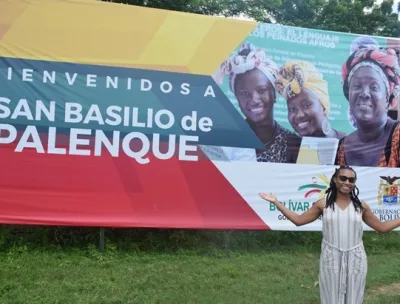
San Basilio de Palenque is important to Colombia for several reasons.
San Basilio de Palenque, an Afro-descendant community in Colombia, occupies a very important place in the country's history and culture. Located in the department of Bolívar, San Basilio de Palenque is recognized as the first free town in the Americas, which emerged during the colonial period as a refuge for enslaved people seeking to escape oppression.
This community has preserved its unique cultural identity throughout the centuries, preserving traditions, language and artistic manifestations that reflect its resistance and resilience. The relevance of San Basilio de Palenque lies in its invaluable contribution to Colombian diversity and heritage, serving as a source of inspiration and an example of cultural empowerment. Among some of the outstanding characteristics of palenque stands out.
resistance against slavery
San Basilio de Palenque was the first slave-free town in the Americas. The inhabitants of Palenque resisted slavery and fought for their freedom, setting an example of resistance and determination for other Afro-Colombians and marginalized communities.
Preservation of African culture
The community of San Basilio de Palenque has preserved and transmitted its African culture throughout the centuries. The Palenquero language, musical traditions, dances and customs are a living testimony of the African cultural richness in Colombia.
International recognition
San Basilio de Palenque has been recognized by UNESCO as an Intangible Cultural Heritage of Humanity, which highlights its importance not only for Colombia, but also for the world. This recognition contributes to the preservation of the Palenque culture and promotes cultural tourism in the region.
Afro-Colombian identity and pride
San Basilio de Palenque is a symbol of Afro-Colombian identity and pride. The community has faced historical and contemporary challenges related to discrimination and exclusion, but their fight and resistance have inspired other Afro-descendant communities in Colombia and around the world.
Promotion of sustainable tourism
The presence of San Basilio de Palenque as a cultural tourist destination contributes to the economic development of the region. Sustainable tourism can provide employment opportunities and generate income for the community, while promoting respect for culture and the preservation of the natural environment.
By exploring the culture of San Basilio de Palenque, our students have the opportunity to immerse themselves in a vibrant tradition that embraces music, dance, and ancient stories. Through this experience, they not only strengthen their command of Spanish, but also connect with the essence of a community full of resilience and cultural pride.
Our dedicated teachers, with Hispanic roots and a deep understanding of cultural diversity, serve as ambassadors for this rich heritage. Their passion for sharing the magic of San Basilio de Palenque is reflected in each class, where they subtly integrate aspects of their culture into the teaching process.
In addition, we organize special events that allow our students to experience first-hand the music, dance, and gastronomy of San Basilio de Palenque. These activities not only enrich their learning experience, but also provide them with a deeper connection to the rich cultural diversity of Spanish-speaking countries.
In short, at our ELE school, we use the history and culture of San Basilio de Palenque as a subtle and elegant source of inspiration. Through this special connection, our students have the opportunity to discover the magic of Spanish while immersing themselves in a unique and enriching cultural tradition.
Would you like to know more? Write us at info@nuevalengua.com and we will tell you about our Spanish courses and cultural immersion In colombia.
All the articles in this blog have been written by the teachers of our school and by students from different countries who traveled to Colombia to learn Spanish.
“You travel too and study Spanish in NUEVA LENGUA"
Follow us on our social networks:
RELATED VIDEOS
MEDELLÍN - GUADUAS

